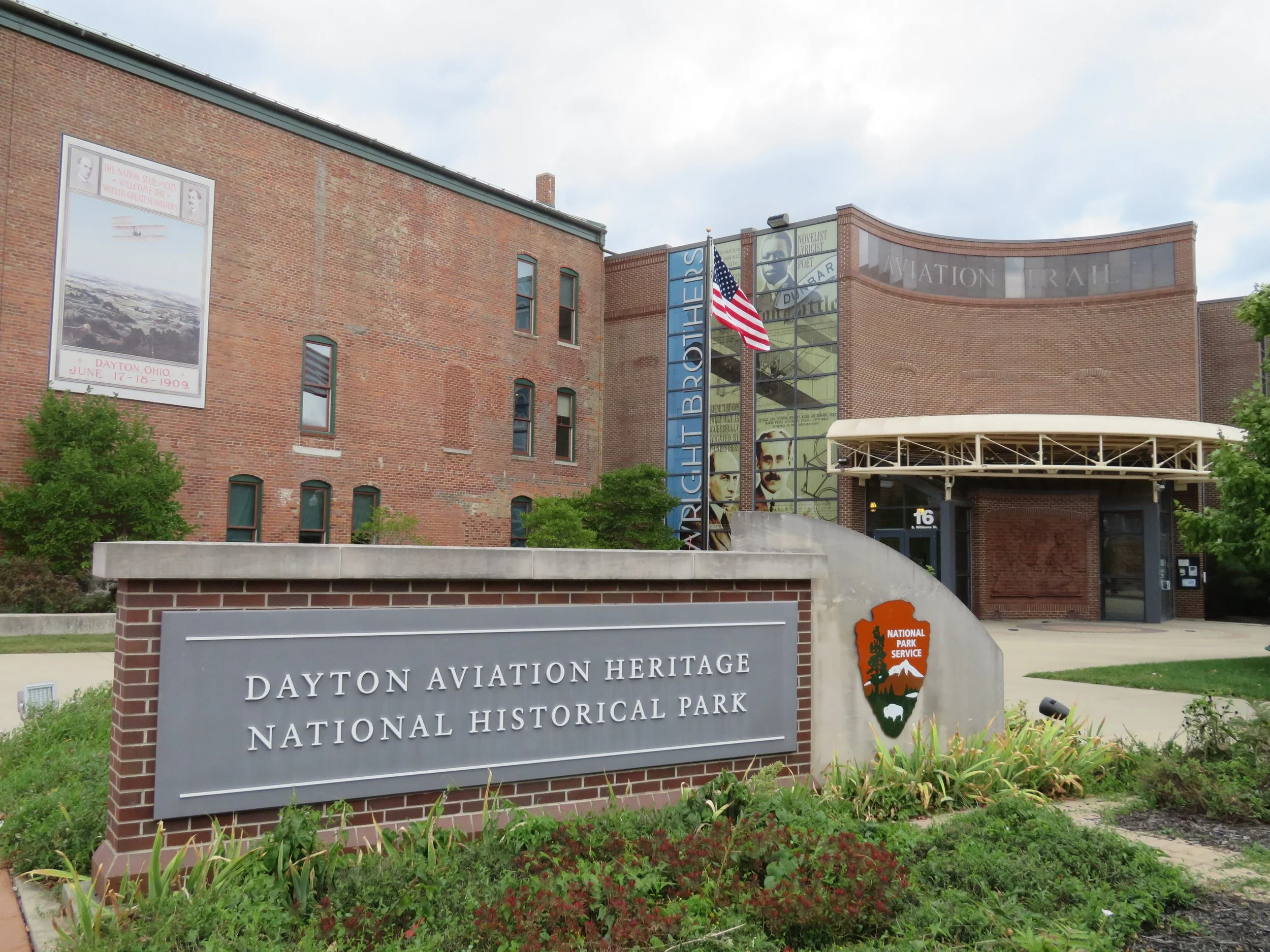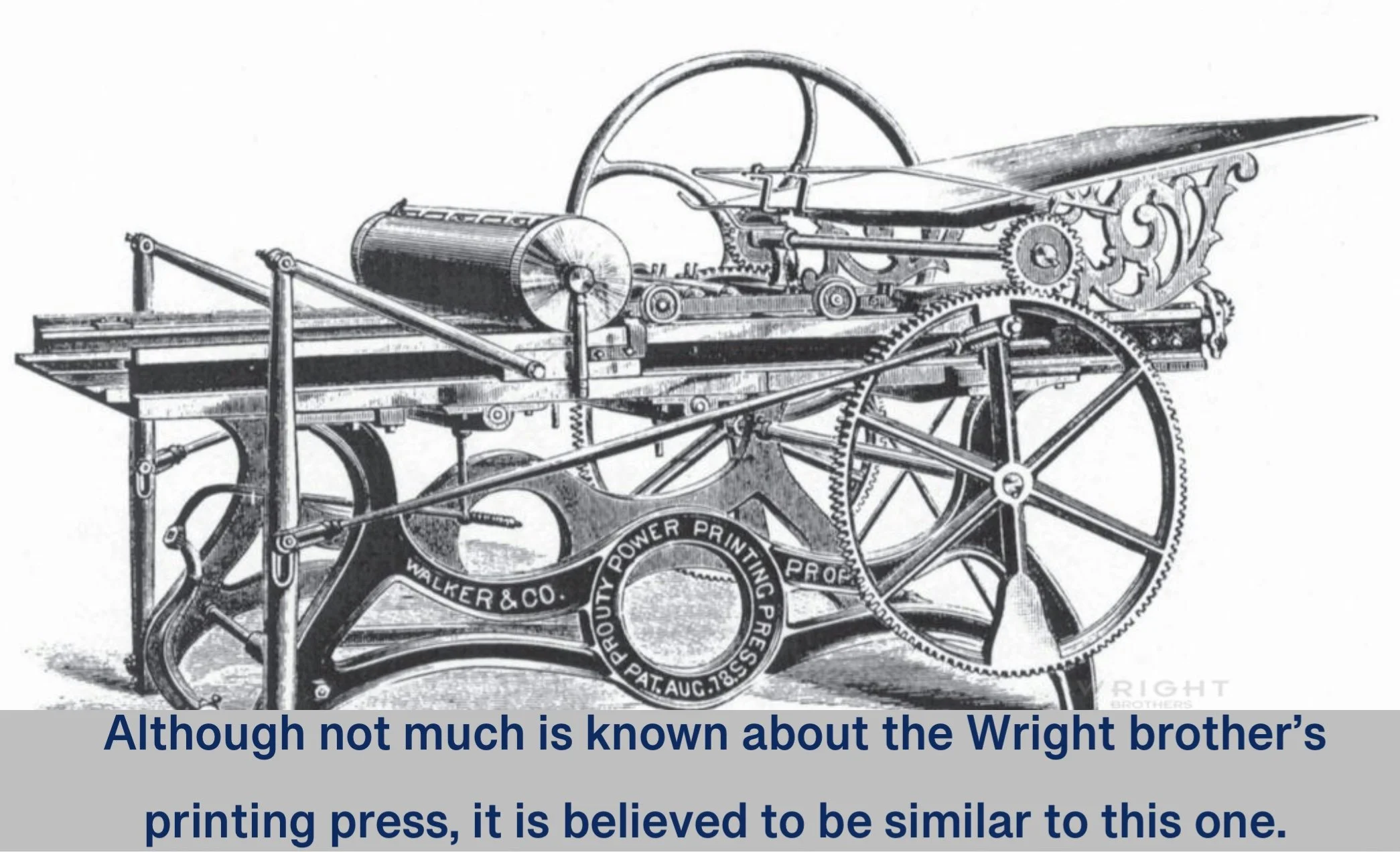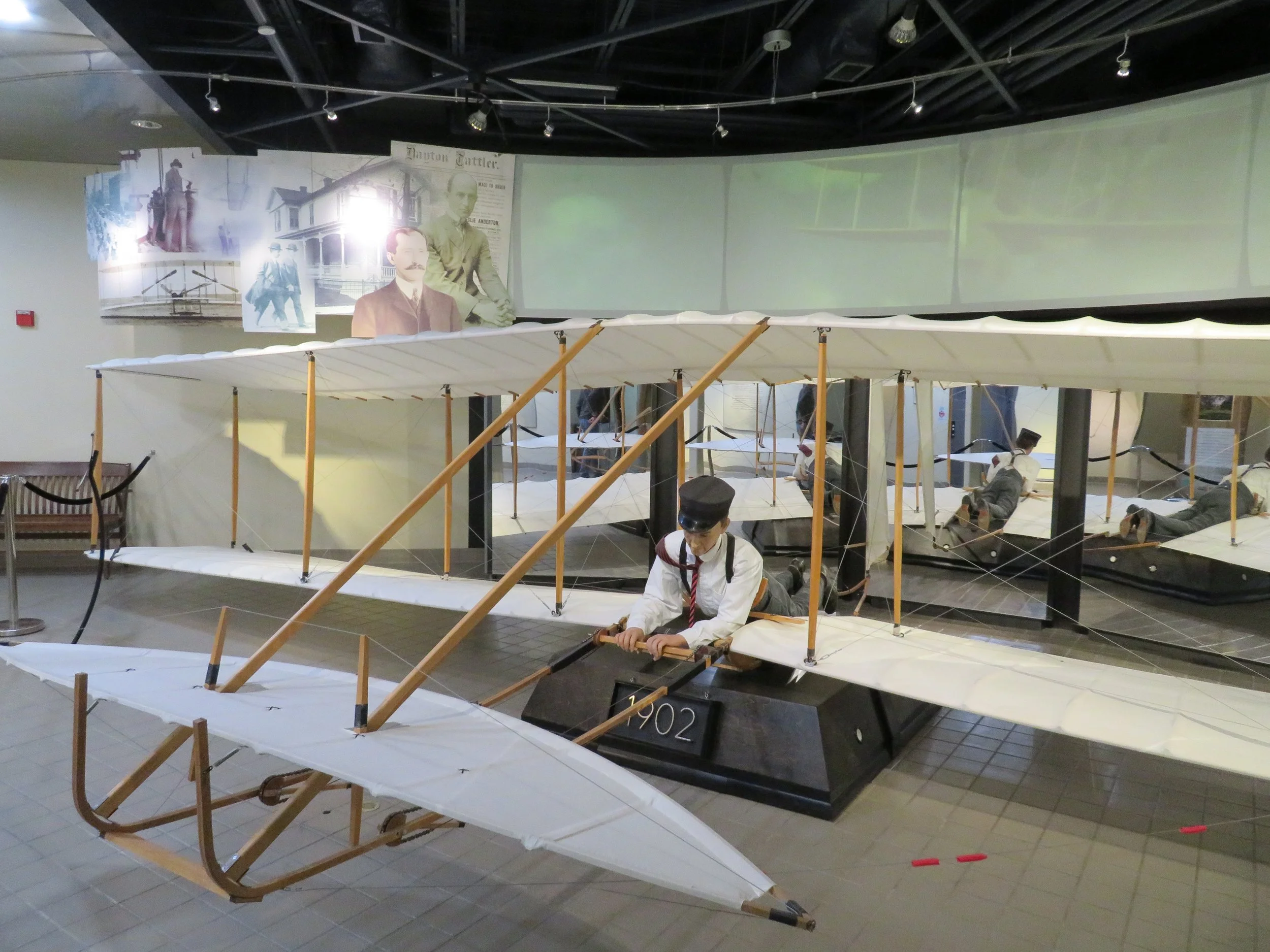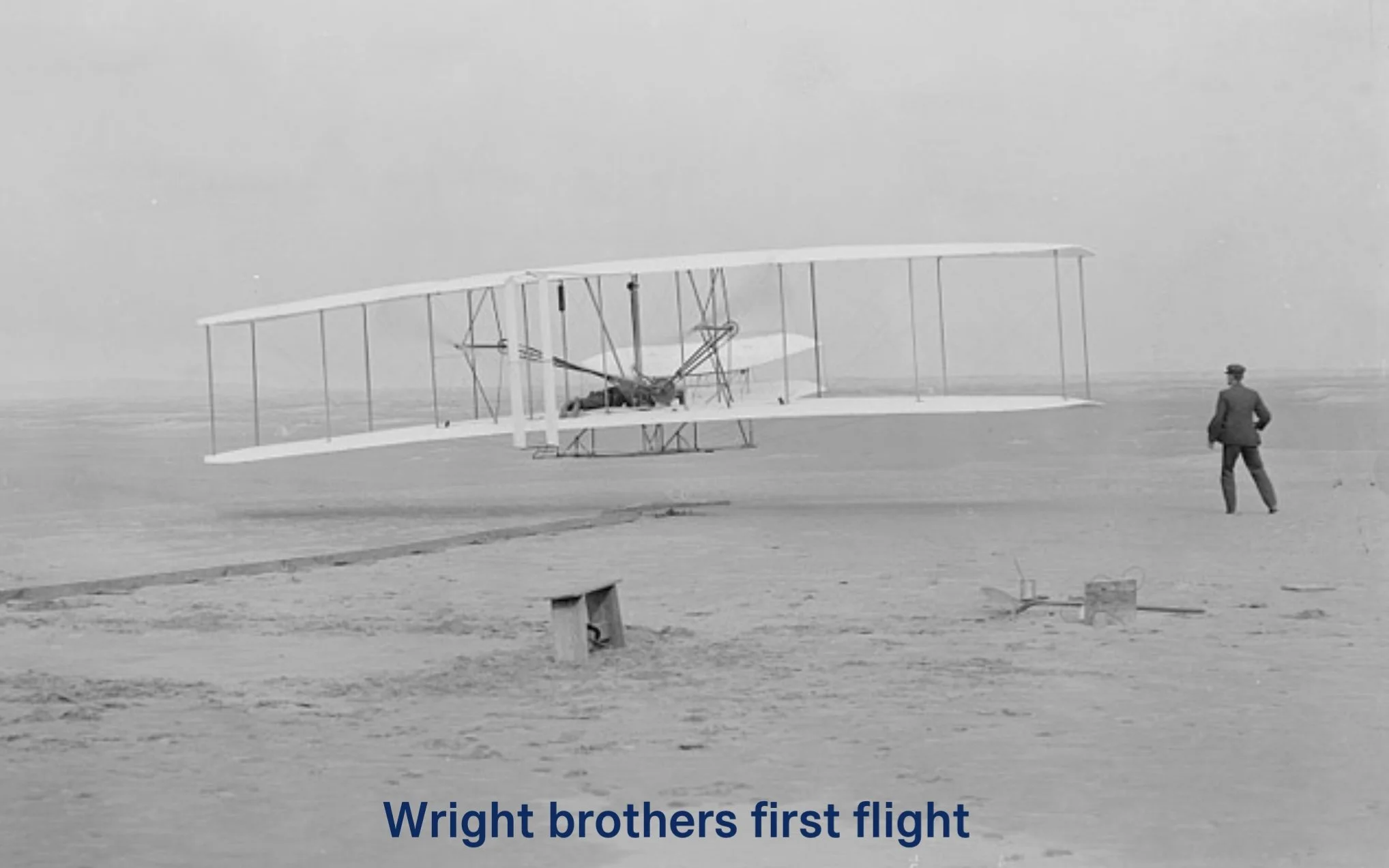Blue View - The Genius of Wilbur Wright
/“Thousands of men have thought about flying machines and a few have even built machines… but these were guilty of almost everything but flying.” Wilbur Wright
I knew that the Wright brothers built the world’s first airplane, which they successfully flew in December, 1903. We learned much about them when we toured the Wright Brothers National Monument in Kittyhawk, North Carolina, a few years ago (visit our blog on that visit here). While visiting the Dayton Aviation National Historical Park recently, however, I learned a lot more about the Wright brothers, and the more I learned, the more I became fascinated with the older brother, Wilbur.
Background
Wilbur was a good student, especially in math and the sciences, and planned to go to Yale.. as a divinity student, following in his fathers footsteps to become a minister. All that changed when he was playing ice hockey and was hit in the face with a hockey stick by another player. Several teeth were knocked out, and he suffered a broken nose and other facial injuries. (An aside… the other player was the local bully, Oliver Crook Haugh, who would be executed in 1906 for the mass murders of his parents and brother). While his injuries eventually healed, Wilbur entered a long period of depression. He dropped out of high school and rarely left the family home, spending time reading and caring for his mother prior to her death of tuberculosis in 1889.
About this time, his younger brother, Orville, who had also dropped out of school, started a printing business. He convinced his brother to become his partner, which got Wilbur out of his funk, and together they grew the business into a successful enterprise.
The two brothers, but Wilbur especially, had always shown a genius for mechanical projects. At an early age, to earn money, Wilbur agreed to fold the weekly, eight page church newsletter. After hand folding a few issues, he decided there must be a better way to do it and designed a machine to do the job. Likewise, when their print shop outgrew their old, slow printing press, rather than buying a faster, expensive model, Wilbur designed and built one himself.
When bicycles became all the rage in the 1890s, the brothers started a bicycle shop. Initially, it was a repair shop, then they expanded to sales. A few years later, they designed their own line of bikes. The two businesses thrived, and they moved to a larger building in downtown Dayton that had room for the printing business on the second floor and the bicycle manufacturing, sales and servicing on the first floor.
Developing a Flying Machine
The brothers always had an interest in manned flight, and followed the research of the early aviators, especially that of the German Otto Lilienthal. When Lilienthal died in a glider crash, Wilbur and Orville decided to continue in his footsteps and develop and design their own flying machine.
They began with several glider designs. Dayton wasn’t known for its wind, however, so they searched for a place that had consistently strong winds. Kitty Hawk, NC, seemed the perfect place, not only for its winds, but also because it was remote and far from prying eyes, and because its sand dunes would make hard landings - or crashes, more survivable.
They spent two frustrating years working on different glider designs - with very little success. Over and over, the wings they designed didn’t generate enough lift to enable their gliders to fly and stay aloft. After their last failure, a discouraged Wilbur told Orville, “Not in a thousand years will man ever fly”.
Wilbur had been designing their glider wings using the lift formulae developed by Lilienthal, but those designs were only generating about a third of their theoretical values. Wilbur rightly concluded that there must be a problem with Lilienthal’s calculations. When the brothers returned to Dayton, rather than relying on others’ research, they decided to compile their own data. They constructed a wind tunnel and designed the instrumentation needed to measure lift and airspeed, and systematically tested more than 200 different airfoil shapes. When the testing was completed, he had not only found the error in Lilienthal’s equations, he was able to develop his own original, more comprehensive equations for airfoil design. His new glider design worked as expected. By then Wilbur had become the world’s foremost aeronautical engineer… not bad for a high school dropout.
There were still other problems to overcome before their flying machines could be considered successful, however. One was the matter of propulsion. To solve this, he used his airfoil equations to design a propeller, then hand-built a small gas engine to turn it. The biggest remaining problem was how to maintain stability and control in the air. They needed to be able to fly a stable course, ascend, descend, and steer the flying machine safely and without stalling. This took months of experimentation and the dedication to continue after a catastrophic, near fatal crash. He persevered, however, and eventually found solutions to the remaining obstacles.
There’s an old saying that a successful invention requires 10 percent inspiration and 90 percent perspiration. In the case of the Wright brothers and their flying machine, there was no lack of tenacity and perspiration, but I think the recipe for their success also included a significant addition of genius.
See you next week…






